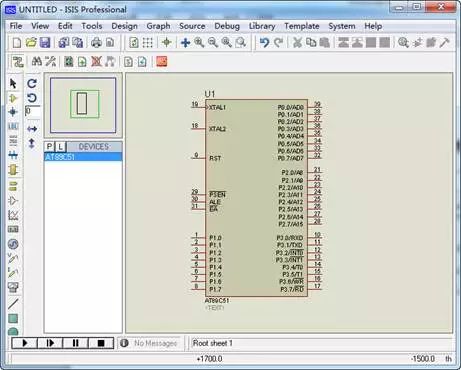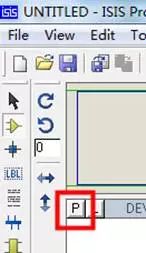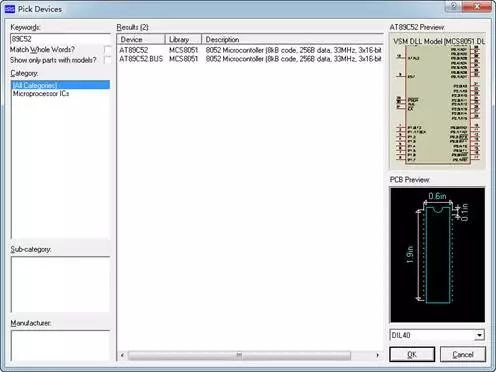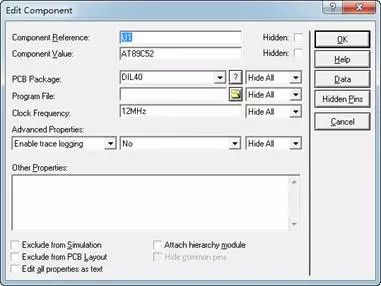Please click on the aboveblue text  to subscribe for free!
to subscribe for free!
Proteus software is an EDA tool published by Labcenter Electronics in the UK. It is commonly used for simulating digital circuits such as microcontrollers and consists of two programs: ISIS for simulation and ARES for PCB design. We often use the ISIS simulation software, and its interface is shown in the figure below.

When you open Proteus ISIS, it will default to create a new blank document. You can also create a new one via the menu File-New Design-Default. Click the button “P” (see the box in the figure below), and you can open the component library to add the required components.

Enter 89C52 in the search box to find the AT89C52 microcontroller (since there is no STC microcontroller, we can use the fully compatible AT series microcontroller instead). Select the required device and click the “OK” button to add it to the “DEVICES” section. In the “DEVICES” section, select the required device model, then click in the blank area in the middle of the screen to add the component to our circuit design diagram. Then use the mouse to click to connect wires, and the circuit diagram of the microcontroller minimum system can be drawn.

After finishing the circuit, double-click the microcontroller, and the following window will pop up. In the Program File, we select the HEX program file we have compiled (HEX files will be introduced later), and we can run the program. Additionally, in practical use, the microcontroller in Proteus can work normally even without connecting to the minimum system, that is, without power supply, crystal oscillator, and reset circuit. Observant readers may have noticed that the next column under Program File is Clock Frequency, which is the clock frequency for the microcontroller set by this parameter and is not related to the crystal oscillator connected in the circuit.

After the circuit is connected and the relevant parameters are set, we can run the simulation by clicking the run button. During the run, the program simulates the operation of the real circuit. We can see the LED’s on and off, the display of characters on the seven-segment display and LCD, the rotation of the motor, and hear the sound of the buzzer; we can also use virtual instruments such as oscilloscopes, voltmeters, ammeters, and logic analyzers to assist us in designing circuits and programs; using Proteus for analysis during program debugging is very convenient.
By the way, in Proteus, the component library is all in English. The common components are as follows:
RES: Resistor; CAP: Capacitor; BUTTON: Pushbutton Switch; CRYSTAL: Crystal Oscillator; DIODE: Diode; LED: Light Emitting Diode.
The original version of Proteus is in English, and the official version does not have a Chinese version. Many software programs are similar; the main version is in English, although some Chinese versions can be downloaded online, the quality of the translations varies, and there are often issues with translated versions. Many software and documents do not have a Chinese version at all. Therefore, I hope readers can overcome psychological barriers and gradually adapt to an English learning environment.
Some readers may feel that using English software or reading an English document filled with unfamiliar words is challenging. In our study of microcontrollers, the English vocabulary used in the software and documents mainly falls into two categories: common vocabulary, such as Files for files, Edit for edit, which are easy to master; and technical vocabulary, such as Resistor for resistor, PCB for printed circuit board, MCU for microcontroller, etc. There are many technical terms that are difficult to understand. The reason we find some English software and documents hard to comprehend is mainly due to the abundance of technical terminology. You can refer to a dictionary. The difficulty in understanding these technical terms is not a language issue but rather a knowledge issue. If you tell someone with no knowledge of circuits the term “Resistor”, they will not understand it at all; but even if you tell them “电阻”, they still won’t understand.
If you find this article helpful, please don’t forget to click the share button in the upper right corner to share it with your friends! Seize the business opportunities!
51 Microcontroller Learning Network
ID: gh_29176fc67325
This is a platform for electronic enthusiasts, mainly introducing electronic circuit applications, basic knowledge of microcontrollers, and some DIY creative electronic products. Everyone is welcome to discuss and learn together.
▲ Long press the QR code to “recognize” and follow
Life Short Videos 1
ID: gh_e45926de778f
Life is dull, but exciting moments are shared daily through short videos with you. Fun and interesting videos keep coming; don’t tell others, you know what I mean…
▲ Long press the QR code to “recognize” and follow

